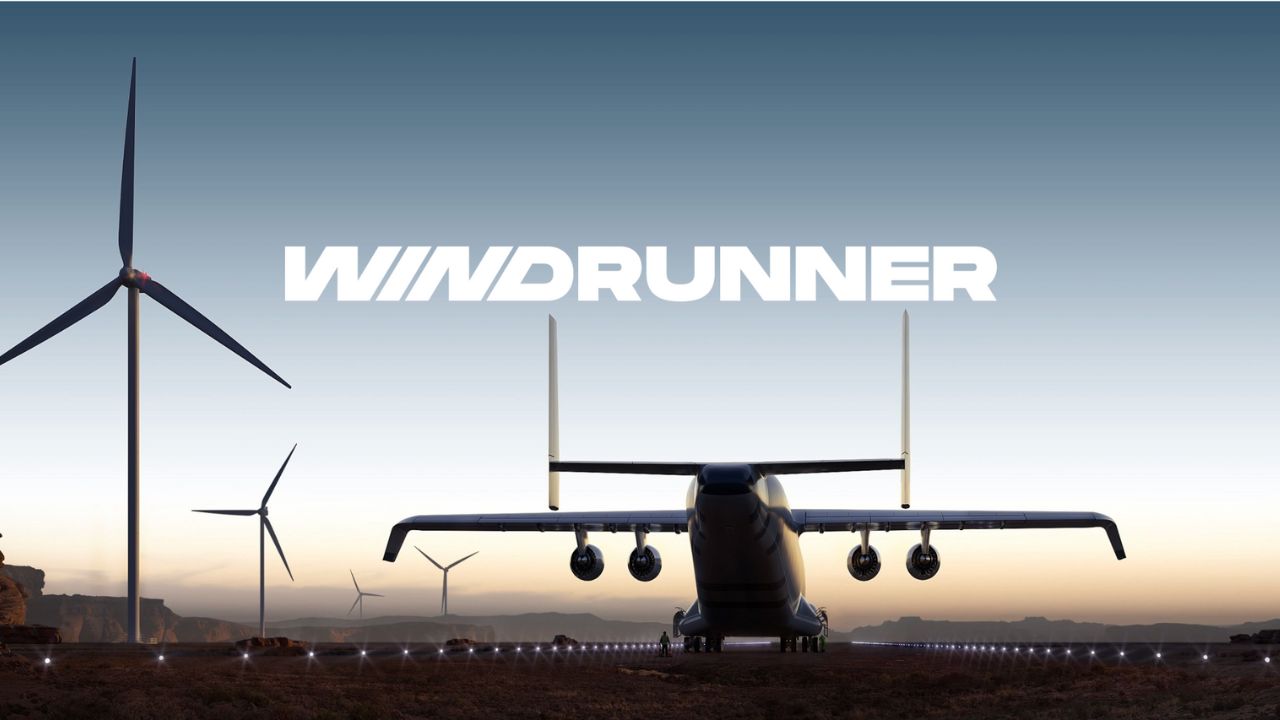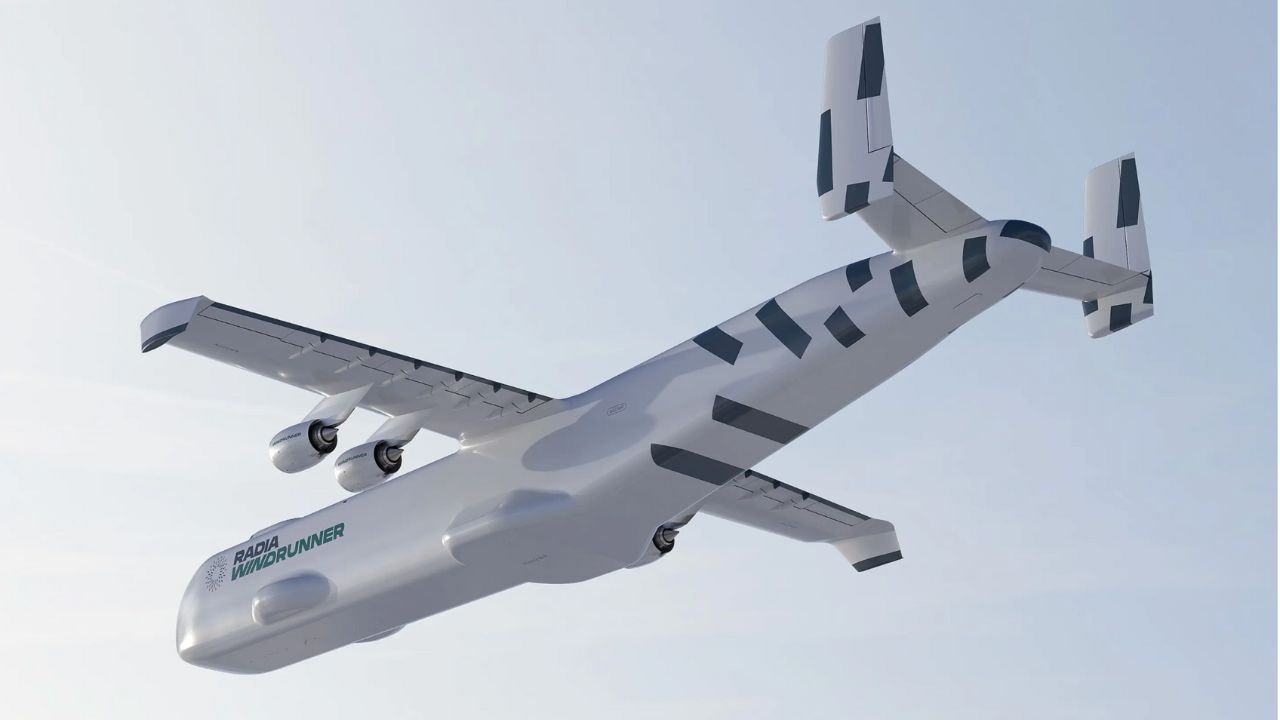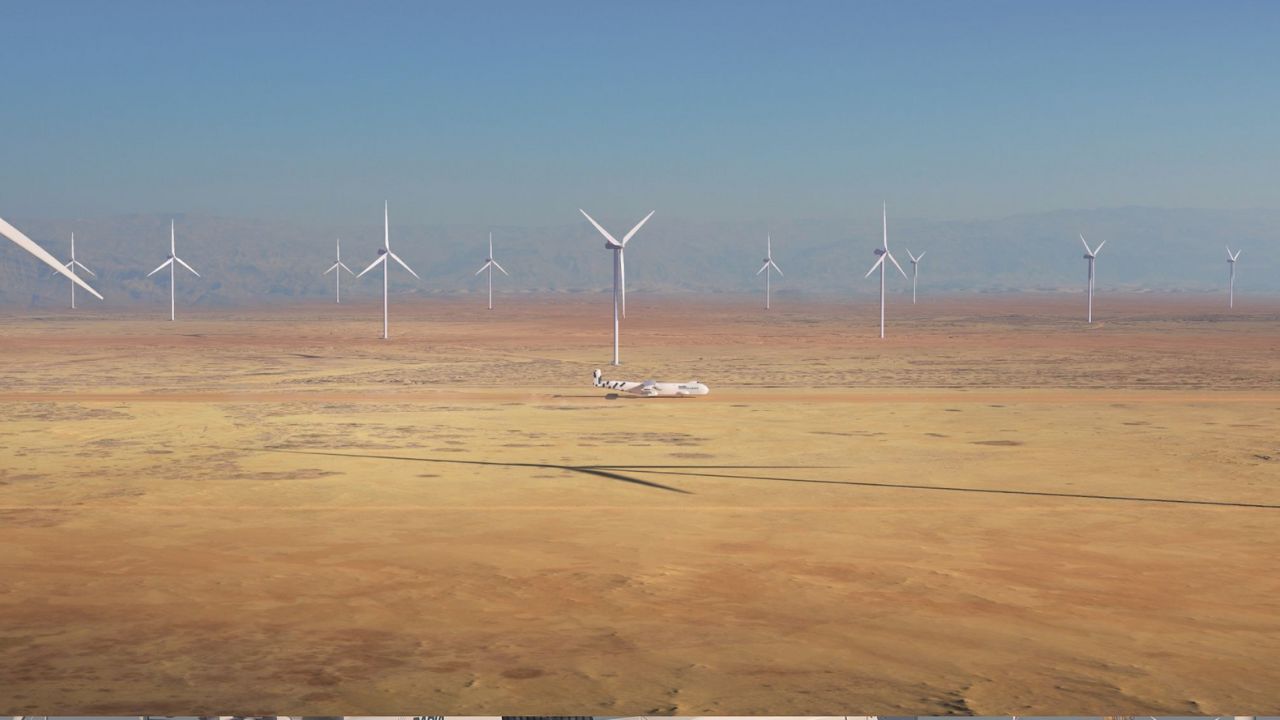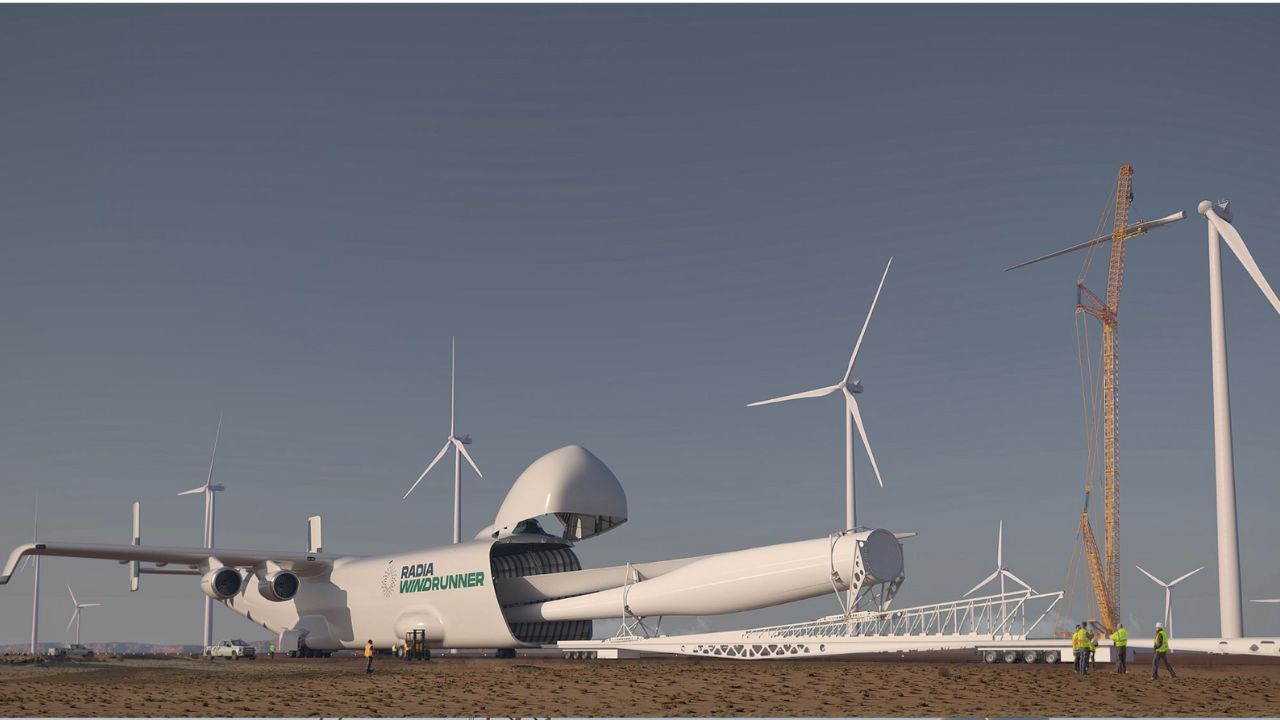There’s this new aircraft called the WindRunner, and it’s not just any plane. Imagine something so big it was specifically made to haul the massive turbines that are the backbone of onshore wind energy. The WindRunner can carry cargo that just can’t fit on the road and can go places that are a bit on the rough side as far as terrain.

Why size matters here
When it comes to wind turbines, bigger often means better. The larger the blades, the more wind they can catch, which means more power for us. But there’s a hitch—getting these gigantic blades to where they need to go is a real headache. Roads just aren’t built for moving blades that can be almost 350 feet long.

Credit: Radia
This is where the WindRunner comes in. It’s all about bringing those giant turbine blades, the ones we could only dream of fitting on roads, straight to where they’ll stand tall and proud, catching the breeze and turning it into energy. Amazingly, the WindRunner aircraft can transport wind turbines longer than its own length if they are divided into segments.

Credit: Radia
MORE: TESLA’S ELECTRIC SEMI-TRUCK TAKES ON A DIESEL BIG RIG
The WindRunner by the numbers
Now, let’s break down what this flying giant brings to the table:
Length: 354 feet (That’s more than a football field)
Height: 79 feet (Think of it as tall as an Airbus A380 but in a whole different league.)
Wingspan: 261 feet (Nearly as wide as the length of a football field is wide.)
Max Payload: 160,000 pounds (Yep, it can carry a lot.)
Range: Up to 1,200 miles with a full load (Pretty impressive, right?)
And here’s the kicker: it can land and take off from airstrips as short as 6,000 feet. We’re talking about places that aren’t much more than cleared-out patches of land. The WindRunner doesn’t need a fancy airport; give it a flat stretch, and it’s good to go.

Credit: Radia
The big picture for wind energy
The WindRunner is more than just a huge plane; it’s a glimpse into the future of renewable energy. By making it possible to transport enormous turbine blades to onshore locations, it’s paving the way for more efficient, cost-effective wind farms. Imagine reducing the cost of clean energy by up to 35%. That’s what we’re talking about here—a game-changer for onshore wind development.

Credit: Radia
MORE: ELECTRIC AIR TAXI AS QUIET AS A DISHWASHER POISED TO CHANGE AIR TRAVEL
The WindRunner’s impact on traditional transportation jobs
Introducing such a revolutionary aircraft like the WindRunner inevitably raises questions about its impact on traditional jobs, particularly in the transportation sector. The advent of this giant in the logistics landscape could alter the demand pattern for conventional trucking services, traditionally relied upon for transporting large goods.
Truck drivers, who have been the backbone of freight movement, might see a shift in the nature of their work, especially those specializing in oversized loads that the WindRunner is designed to carry. However, this technological leap could also spawn new job opportunities in aircraft operations, maintenance, logistics planning, trucking, and ground transport,tailored to support the unique requirements of WindRunner operations.

Credit: Radia
Moreover, while the WindRunner represents a breakthrough in transporting extremely large cargo like wind turbine components, it doesn’t spell the end for trucking jobs across the board. Many sectors of the economy still rely heavily on road transportation for goods that fall within the standard size and weight limits.
Therefore, the impact of the WindRunner might be more nuanced, affecting only a specific niche within the trucking industry, particularly those involved in the logistics of renewable energy components. It also highlights the ongoing evolution in the logistics and transportation industry, where innovation often leads to a reallocation of jobs rather than their outright disappearance.
This transition underscores the importance of adaptability and skill development for workers in affected sectors, ensuring they remain competitive in an ever-changing job market.

Credit: Radia
Kurt’s key takeaways
The WindRunner project is exciting not just for what it is—a massive, innovative aircraft—but for what it represents. It’s about breaking through barriers, literally making the skies the limit for how big wind turbines can get and where we can put them. As this giant gets ready to take off, it’s not just about the plane itself but about the doors it opens for cleaner, more accessible wind energy. Here’s to watching this giant soar, bringing us closer to a future powered by the wind.
Do you think the benefits of the WindRunner for the wind energy industry outweigh any potential job losses in the traditional transportation sector? Why or why not? Let us know in the comments below.
FOR MORE OF MY SECURITY ALERTS, SUBSCRIBE TO MY FREE CYBERGUY REPORT NEWSLETTER HERE



1 comment
Wind turbines are a bad joke, so you’re adding more jets with their pollution?